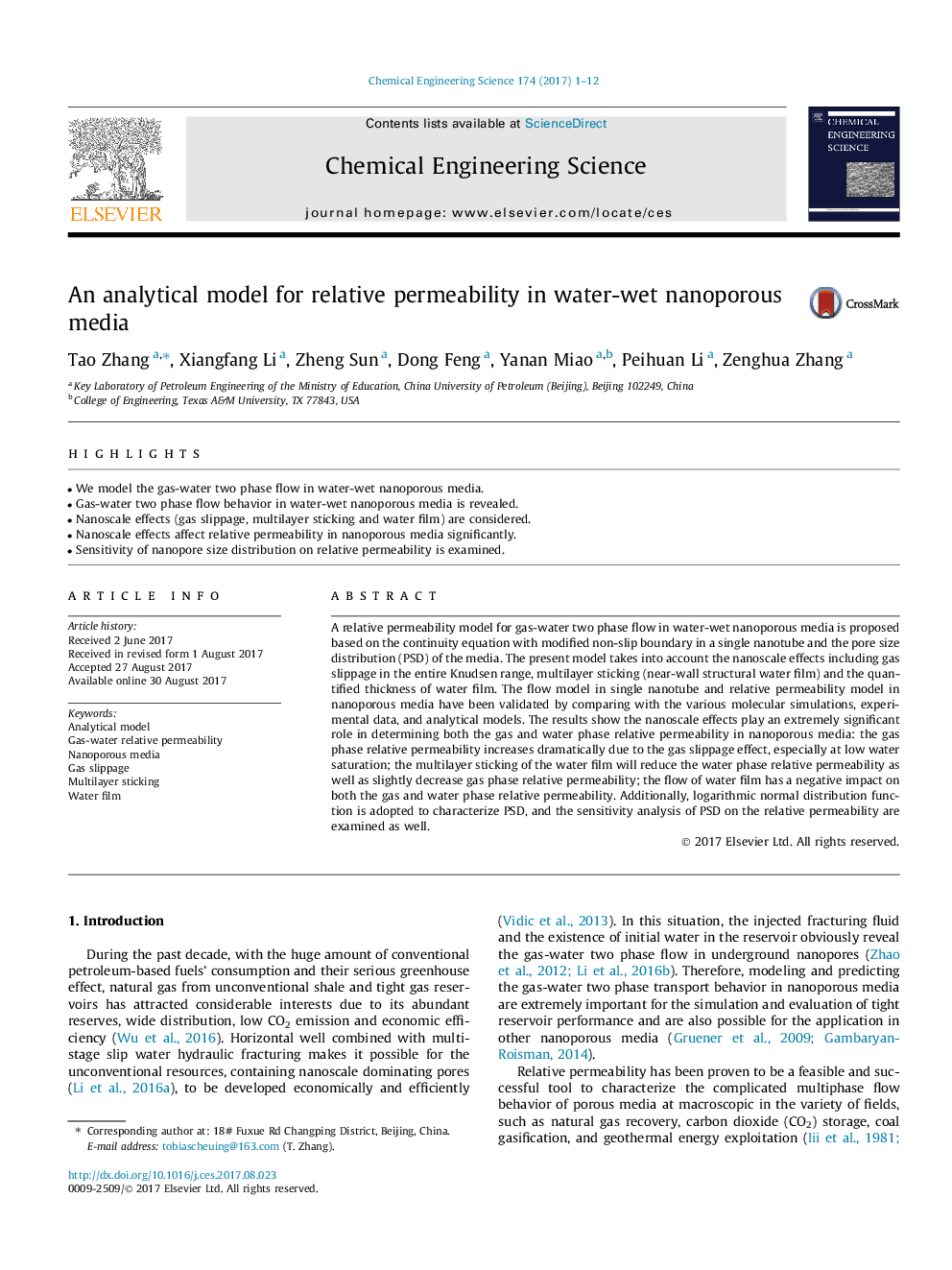| Article ID | Journal | Published Year | Pages | File Type |
|---|---|---|---|---|
| 6466872 | Chemical Engineering Science | 2017 | 12 Pages |
â¢We model the gas-water two phase flow in water-wet nanoporous media.â¢Gas-water two phase flow behavior in water-wet nanoporous media is revealed.â¢Nanoscale effects (gas slippage, multilayer sticking and water film) are considered.â¢Nanoscale effects affect relative permeability in nanoporous media significantly.â¢Sensitivity of nanopore size distribution on relative permeability is examined.
A relative permeability model for gas-water two phase flow in water-wet nanoporous media is proposed based on the continuity equation with modified non-slip boundary in a single nanotube and the pore size distribution (PSD) of the media. The present model takes into account the nanoscale effects including gas slippage in the entire Knudsen range, multilayer sticking (near-wall structural water film) and the quantified thickness of water film. The flow model in single nanotube and relative permeability model in nanoporous media have been validated by comparing with the various molecular simulations, experimental data, and analytical models. The results show the nanoscale effects play an extremely significant role in determining both the gas and water phase relative permeability in nanoporous media: the gas phase relative permeability increases dramatically due to the gas slippage effect, especially at low water saturation; the multilayer sticking of the water film will reduce the water phase relative permeability as well as slightly decrease gas phase relative permeability; the flow of water film has a negative impact on both the gas and water phase relative permeability. Additionally, logarithmic normal distribution function is adopted to characterize PSD, and the sensitivity analysis of PSD on the relative permeability are examined as well.
